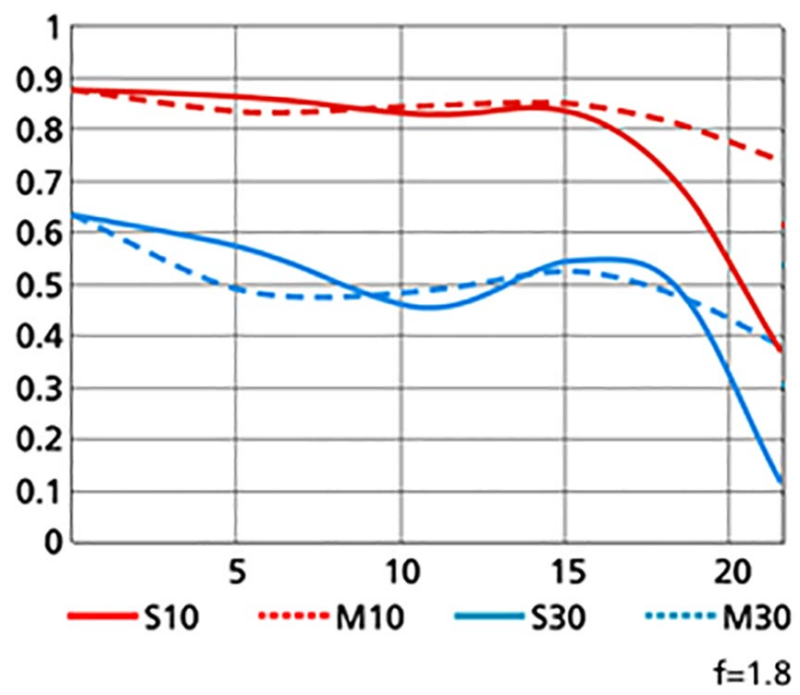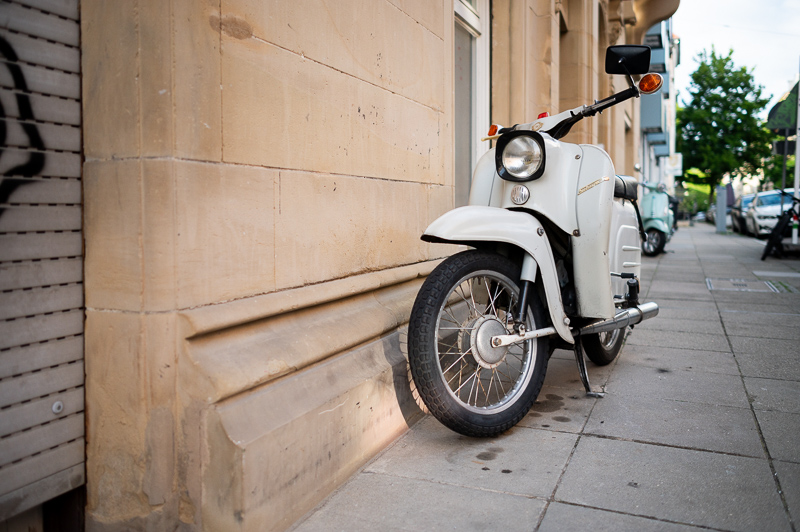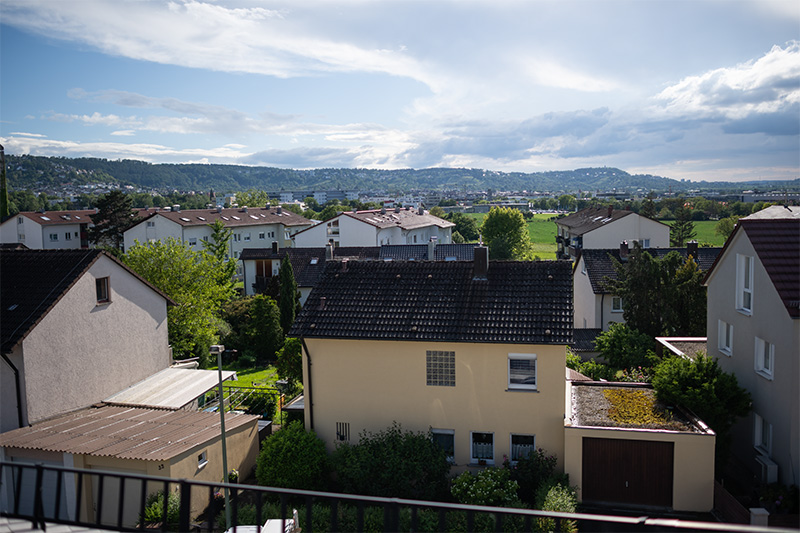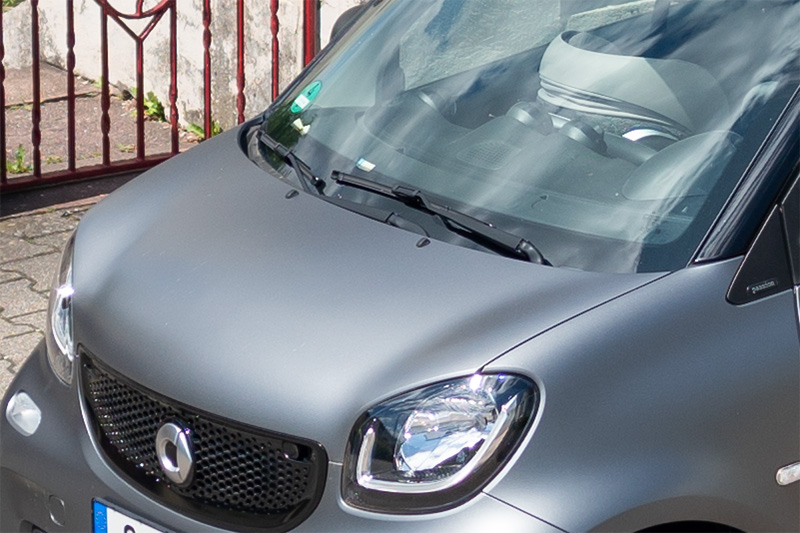Introduction

The Nikon AF-S 28mm 1.8G was the most affordable f/1.8 wide angle prime in Nikon’s AF-S era. It always flew a bit under the radar, probably because many people already had a zoom lens covering 28mm at f/2.8 or because they preferred a 24mm or 35mm. Good fast 28mm lenses are rare birds though, so let’s have a closer look at this one.
Sample Images






You can find many of the sample images in full resolution here.
Contents
Specifications / Version History
There have been three different fast Nikon 28mm F-mount lenses:
- Nikon AF 28mm 1.4D
520g, 11/8 design, 72mm filter, 1 aspherical element, MFD 0.35 m, D-type, 1993-2005 - Nikon AF-S 28mm 1.8G
325g, 11/9 design, 67mm filter, 2 aspherical elements, MFD 0.25 m, G-type, 2012- - Nikon AF-S 28mm 1.4E
646g, 14/11 design, 77mm filter, 3 aspherical elements, MFD 0.28 m, E-type, 2017-
This is a review of the slower Nikon AF-S 28mm 1.8G, its full specifications are:
-
- Diameter: 73 mm
- Field of view: 75° (diagonally)
- Length: 81 mm
- Weight: 325g (without hood, without caps)
- Filter Diameter: 67 mm
- Number of Aperture Blades: 7 (rounded)
- Elements/Groups: 11/9

- Close Focusing Distance: 0.25 m
- Maximum Magnification: 1:4.3 (measured)
- Mount: Nikon F
buy from Amazon.com | Amazon.de | ebay.com | ebay.de | B&H (affiliate links) for $700 (new) or $300 (used)
History
When released in 2012, this Nikon AF-S 28mm 1.8G was the third lens of Nikon’s more affordable f/1.8 lens lineup after the Nikon AF-S 85mm 1.8G and Nikon AF-S 50mm 1.8G. The thing is, not a lot of people thanked Nikon for it back in the day.
At that time fullframe cameras weren’t as affordable as today and many APS-C (DX) users were still looking for a fast wide angle prime in the 20-24mm range. A 28mm didn’t really cut it for them.

Even among fullframe users 28mm 1.8 primes weren’t overly popular at that time, as many fullframe Nikon users already had a standard or wide angle zoom covering 28mm with f/2.8, so the jump from f/2.8 to f/1.8 didn’t seem significant enough to buy and carry an additional lens.
It took until the end of 2014 for the Nikon AF-S 20mm 1.8G and until late 2015 for the Nikon AF-S 24mm 1.8G to be released and today this 28mm 1.8G is by far the cheapest of the three on the used market.
Handling/Build quality

This Nikon AF-S 28mm 1.8G is part of Nikon’s more affordable f/1.8 line up together with the 20mm 1.8G, 24mm 1.8G, 35mm 1.8G, 50mm 1.8G and 85mm 1.8G.
The outer casing seems to be mostly made from high quality polycarbonate which is also true for the filter thread. There is a rubber gasket to be found at the bayonet.
The focus ring features a mechanical coupling to the helicoid (no focus by wire) and it takes about 90° from the minimum focus distance (0.25 m) to infinity.
The resistance is okay, definitely not as nice as a real manual lens or some of Sigma’s better AF lenses.
Many Nikon AF-S G-lenses show some slack when changing the direction of rotation on the focus ring and this 28mm 1.8G is clearly one of those, setting precise focus manually is not a great joy with this lens.

A plasticky bayonet type lens hood it also part of the package. It can be mounted reversed for transport.

This 28mm is more compact and very lightweight compared to those of the f/1.4 series. I used the previously released Nikon AF-S 24mm 1.4G and 35mm 1.4G for a comparison here, the Nikon AF-S 28mm 1.4E is even bigger.
This is a “G” lens – which means it doesn’t feature an aperture ring – so you need an adapter with built-in aperture control to be able to change the aperture value when using this lens on an E-mount camera like I did here. With the Monster LA-FE1 and LA-FE2 adapters also the autofocus will work on Sony cameras.

If you are a Z-mount user this lens also works flawlessly on the FTZ adapters.
With the Monster LA-FE1 adapter it weighs 420g, not much more than the Viltrox FE 28mm 1.8 AF at 366g. The Nikon lens generally feels very light in hand.
AF performance
I tested the AF with the Monster LA-FE1/2 adapters on Sony E-mount cameras. Here the AF worked surprisingly well – much better than I would have expected – but then I am also not shooting sports or fast moving animals/humans and I don’t think the lens could keep up with that, as these AF-S f/1.8 primes are generally not very fast focusing lenses.
Via the FTZ adapters on a Nikon Z-mount camera it works just as well as on an F-mount camera, but it is still a rather slow focusing lens.
Vignetting
light falloff

| f/1.8 | 2.6 EV |
| f/2.8 | 1.9 EV |
| f/4.0 | 1.5 EV |
| f/5.6 - f/16 | 1.3 EV |
In this category lenses designed for (D)SLRs actually have a potential benefit over those designed for rangefinder/mirrorless cameras: the long back focus distance can lead to light rays coming from the rear element hitting the sensor at less acute angles.
Compared to the 28mm f/1.4 (DSLR) lenses I reviewed (Nikon AF-S 28mm 1.4E, the Sigma 28mm 1.4 Art and the Nikon AF-D 28mm 1.4) this f/1.8 lens shows higher vignetting figures in the f/1.8 to f/2.8 range, but stopped down further the differences are very small.
The Viltrox FE 28mm 1.8 AF designed for mirrorless cameras shows about half a stop more vignetting at every f/stop.

It is recommended to have a look at this article first to get an idea how this brightness graph works.
optical vignetting
Fast lenses usually show a noticeable amount of optical vignetting. Without going too much into technical details optical vignetting leads to the truncation of light circles towards the borders of the frame.
In the center of the frame almost every lens will render a perfect circle, but only lenses with very low optical vignetting will keep this shape in the corners.
So in the following comparison we move from the center (left) to the extreme corner (right) and see how the shape of the light circle changes.
The optical vignetting amount is pretty much average for a fast 28mm lens.
The optical design features two aspherical elements, but they only lead to very faint onion ring structures.
Sharpness
MTF-Graphs
The MTF graphs of this Nikon AF-S 28mm 1.8G show a good albeit not very good performance across most of the frame with a noticeable drop in performance towards the corners.

Most MTF-Graphs show calculated values that do not take into account manufacturing tolerances and sample variation. Furthermore they are usually calculated for infinity, so in the field and shooting at different distances a noticeable variation may be visible.
Thanks to Lensrentals.com we have some data of actual lenses though and I thought it might be a good idea to compare these graphs to those of the Nikon AF-S 28mm 1.4E from 2017 and the Canon EF 28mm 1.8 USM from 1995:
In the measurements the Nikon AF-S 28mm 1.8G actually looks a bit better in the corners compared to the calculations, this is interestingly the case with most of these AF-S lenses.
Despite being 2/3 of a stop faster, the Nikon AF-S 28mm 1.4E (released in 2017) shows a noticeably better performance everywhere in the frame. It is the latest AF-S f/1.4 prime, way more complex and expensive, so that shouldn’t come as a surprise.
The Canon EF 28mm 1.8 USM from 1995 doesn’t stand a chance, but in 1995 also no one dreamed of high resolution digital sensors I guess.
Focus Shift
With some lenses on stopping down the focal plane shifts to the front or back, which can be an issue on (D)SLRS. Here I do not see any focus shift.
infinity (42mp Sony A7rII)


This Nikon AF-S 28mm 1.8G hit the market shortly after the D800. The D800 led to many Nikon users making the jump from 12mp to a whopping 36mp, which also led to some people noticing a midzone dip for the first time and this 28mm lens actually got a bit of bad press for it.
The midframe definitely benefits from stopping down to f/5.6 whereas the corners actually don’t look that bad from f/1.8 and only slightly improve on stopping down. Best across frame performance I see at f/8.0 here.
The Viltrox AF 28mm 1.8 FE is a bit better here, as the midzone dip is not as noticeable. Here f/5.6 looks already really good across frame.
In my 28mm Comparison I also found the Nikon AF-S 28mm 1.4E to show a noticeable midzone dip and would use f/5.6 for best across frame performance. The Sigma 28mm 1.4 Art performed the best in this category with very even sharpness already at f/2.8.
This is a lens with an internal focus mechanism, so the correct length of the adapter is crucial for it to show optimal performance.
portrait distance (0.9 m, 42mp Sony A7III)
For portraiture it isn’t so important how flat the field is, it is more interesting to see what the sharpness is like when focused at different parts of the frame to take field curvature out of the equation.

This is what I did here, I refocused for every shot and aperture to get the best possible result at different locations in the frame (center, inner midframe and outer midframe).
Focus distance was roughly 0.9 m and the circle of the dollar bill is more or less the size of a human eye.
f/1.8 <————> f/2.8
Compared to the 28mm f/1.4 (DSLR) lenses I reviewed (Nikon AF-S 28mm 1.4E, the Sigma 28mm 1.4 Art and the Nikon AF-D 28mm 1.4) this f/1.8 isn’t the sharpest lens when used wide open at this distance, especially off center. Stopping down to f/2.8 helps, but the performance in the outer midframe still ain’t great.
Also the Viltrox FE 28mm 1.8 AF showed a better performance here.
close (0.25 m, 1:4.3, 42mp Sony A7rII)
The Nikon AF-S 28mm 1.8G is actually the closest focusing fast 28mm fullframe lens I came across so far (not by a lot though). At its maximum aperture it is a bit soft and stopping down does improve the performance noticeably, but this lens surprisingly has a very flat field at closer distances.
Flare resistance

As always evaluating flare is a complex matter since you can get any lens to look bad if you push it hard enough and a slight change of scenario can affect results a lot.
Generally, I found this Nikon AF-S 28mm 1.8G to be a good performer in this category – better than the AF-S 24mm 1.4G and 35mm 1.4G actually. With the sun inside the frame I only managed to create very small ghosts and a faint ring flare with the point light source close to the center of the frame:
With the sun outside the frame there are very specific positions that lead to veiling flare, a slight reframing or simply using the hood helps to completely get rid of these.
Of all the fast 28mm I used so far, this Nikon AF-S 28mm 1.8G is actually one of the better ones in this category.
Coma
We see noticeable Coma at f/1.8 and still some at f/2.8. It is mostly gone by f/4.0,
The Sigma 28mm 1.4 Art and the Nikon AF-S 28mm 1.4E are better corrected at their maximum aperture despite being faster and also the Laowa 28mm 1.2 when stopped down to f/2.0 is almost free of Coma. The Viltrox FE 28mm 1.8 AF also corrects this aberration a bit better.
Distortion
This Nikon AF-S 28mm 1.8G has a bit of a wavy distortion. A correction profile in Lightroom is available, but I don’t think it does a perfect job at correcting it. While it works well in the central part of the frame, there is still some distortion left in the corners.
Bokeh

As usual we will have a look how the lens performs at different distances and in different scenarios.
Close distance



The short minimum focus distance of 0.25 m definitely helps creating a thin DoF here. Thanks to the floating elements design sharpness and contrast are also very good at these distances. Nikon really seems to have perfected this Close-Range-Correction (CRC), as all the fast AF-S wide angle lenses I tried are really good at this.
Mid distance


Unsurprisingly some of the faster 28mm lenses look a bit more impressive here, but this Nikon AF-S 28mm 1.8G shows a pretty decent performance nevertheless.
At close to mid distances I like what I am seeing from this lens.
Long distance



Some fast 28mm lenses struggle a bit at longer distances and also here things get a bit busier towards the corners when there are a lot of structured elements (like foliage) in the background.
With big objects like cars the background will only be faintly out of focus. If that is what you are looking for, a faster and/or longer lens will be better suited to the task.
Sunstars
Nikon’s AF-S f/1.4 lenses with their 9 aperture blades were a bit hit-and-miss when it comes to the quality of the sunstars they create, but this 28mm 1.8 with its 7 aperture blades creates nice, well defined sunstars between f/11 and f/16.
If you want to learn more about this topic have a look at this article.
Chromatic aberration
lateral
Like Nikon’s two faster 28mm 1.4 lenses, also this 28mm 1.8 has lateral CA on a medium level. Luckily these are easily corrected in post by just one click.
longitudinal
If you already read some of my reviews of Nikon’s f/1.4 AF-S lenses you already know: correcting longitudinal CA has not been the number one task of Nikon’s optical engineers during the AF-D and AF-S era and that applies to this 28mm 1.8G with zero ED elements as well.
Strong green and magenta outlining at f/1.8, still noticeable at f/2.8, mostly gone by f/4.0.
Purple fringing is not as big an issue, but can still be spot at f/1.8 and to a much lesser degree at f/2.8.
Conclusion
good
|
average
|
not good
|
At the time this Nikon AF-S 28mm 1.8G was released, not many people were looking for a 28mm f/1.8 lens. Going by today’s used prices, it never really became a fan favorite. At the time of writing this, you have to pay about double for the Nikon AF-S 20mm 1.8G or the 24mm 1.8G on the used market.
In terms of performance this is not a bad lens though. The bokeh is nice in most situations, in terms of sharpness it is usable from f/1.8 and looks very good stopped down, the only real flaw are the strong longitudinal CA – a staple of most of Nikon’s fast AF-S lenses.
In the Nikon Z world you can get the more-than-a-stop slower Z 28mm 2.8 for similar money, whereas the Z 24mm 1.8 is three to four times as expensive, as is the AF-S 28mm 1.4E for F-mount (which is also way bigger and heavier). So if you are looking for an affordable fast 28mm lens and you already have an FTZ adapter, I think this is still a compelling option.
buy from Amazon.com | Amazon.de | ebay.com | ebay.de | B&H (affiliate links) for $700 (new) or $300 (used)
Alternatives
If you are looking for an even faster lens, the Nikon AF-S 28mm 1.4E, the Sigma 28mm 1.4 Art, the Nikon AF-D 28mm 1.4 and the Laowa 28mm 1.2 Argus are all part of my Fast 28mm Comparison, so best have a look there. There are only very few modern 28mm lenses in the f/1.8 to f/2.0 range, so the following list is a short one.
Viltrox 28mm 1.8 AF:
This Viltrox lens is available for Sony E and Nikon Z. Compared to this Nikon lens, the Viltrox’ sharpness performance is actually better, vignetting and distortion are higher though and flare resistance is worse. The Viltrox lens is also a bit heavy, but still lighter than this Nikon 28mm 1.8 with an adapter. At the end of the day, I think these lenses perform similar. If you are a Nikon Z user and you already have an FTZ adapter anyway, a used Nikon 28mm 1.8G is the cheaper way to get a decent 28mm 1.8 lens. If that is not the case be sure to also check out the Viltrox before pulling the trigger.
buy from manufacturer’s shop (use the code “PRnet” for 8% discount) | B&H | ebay.com (affiliate links) for $379
Sony FE 28mm 2.0:
The Sony FE 28mm 2.0 is one of the earlier fullframe lenses released for the Sony E-mount. It has very strong distortion and heavily relies on the digital correction of it. In terms of sharpness it looks similar to me, vignetting is also similar, CA correction also not great, Coma correction a bit better. If you are a Sony user looking for a compact, fast 28mm lens this is still worth a closer look.
buy from Amazon.com | Amazon.de | ebay.com | ebay.de | B&H for $448 (affiliate links)
Sample Images














You can find many of the sample images in full resolution here.
Further Reading
- All Nikon Lens Reviews
- Guide to 20-28mm wide angle lenses for Sony FE cameras
- Review: Nikon AF-S 20mm 1.8G
- Review: Sigma 35mm 1.2 Art DG DN
- How to: Taking environmental Portraits
Support Us
Did you find this article useful or just liked reading it? Treat us to a coffee!
![]()
![]()
![]() via Paypal
via Paypal
This site contains affiliate links. If you make a purchase using any of the links marked as affiliate links, I may receive a small commission at no additional cost to you. This helps support the creation of future content.
Latest posts by BastianK (see all)
- Review: Thypoch 21mm 1.4 Simera - July 12, 2025
- Review: SLRmagic 50mm 0.95 Hyperprime LM - July 5, 2025
- Full Resolution Pictures getting fixed - July 4, 2025













































I feel like the Sigma 28mm F1.8 High-Speed from 1990 should be mentioned. It predated the Nikon AF 28mm 1.4D and the Canon EF 28mm F1.8 USM. I had very sharp early AF example and that seems to be fairly common experience.
The lens I’m really enamored with is they 28mm f1.4E. Too bad it’s like $1K used. Pretty untypical for a DSLR lens to be that expensive used, but I think it’s performance justifies it.
Review is coming and yes it does.
Performance very similar to Zeiss 28mm 1.4 Otus but in a way smaller package and with AF.
woah, I’m so excited for it. Thanks for reviewing all these cool lenses! I almost completely rely on your reviews